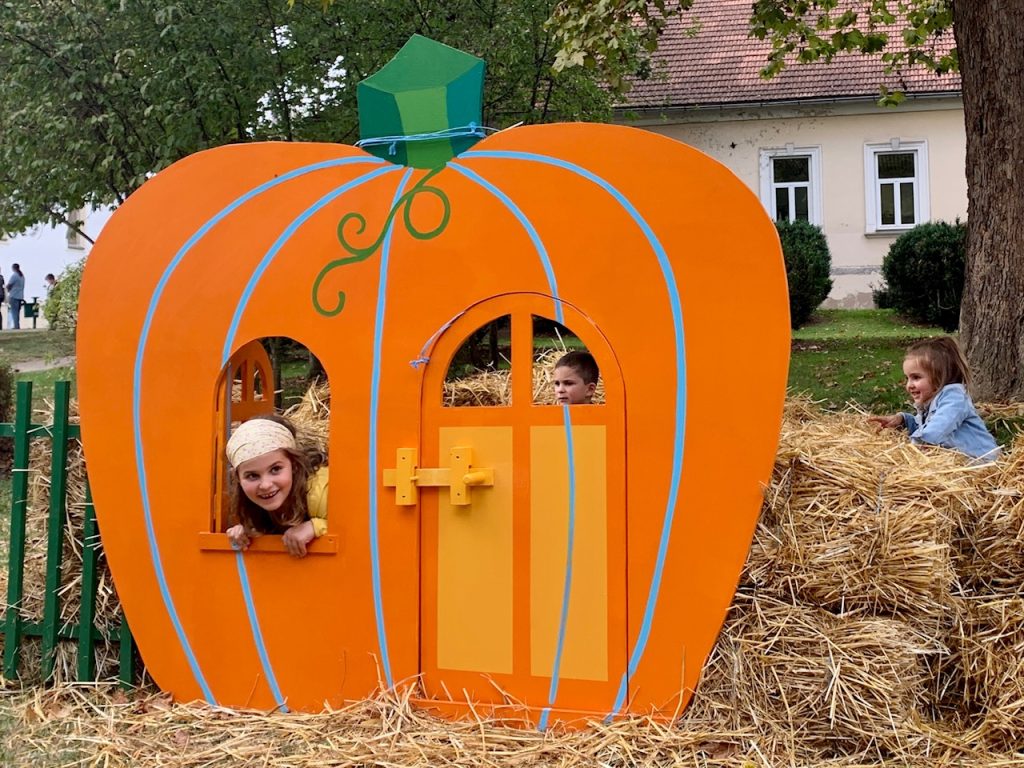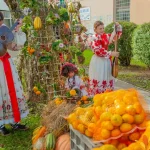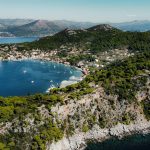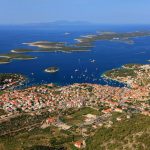At a recent meetup for digital nomads in Zagreb, one of my colleagues mentioned the annual bučijada (pumpkin festival) starting the following day in Ivanić Grad, a town roughly 45 minutes outside of the capital. I squealed with delight. I love eating pumpkin in various forms and the pie (specifically, my mother’s creation) is one of my all-time favorite foods. Hers is the gold standard of pies everywhere, with its tasty filling, creamy texture, and moist crust. I look forward to this time of year for all kinds of pumpkin goodness, the only season when it’s available.
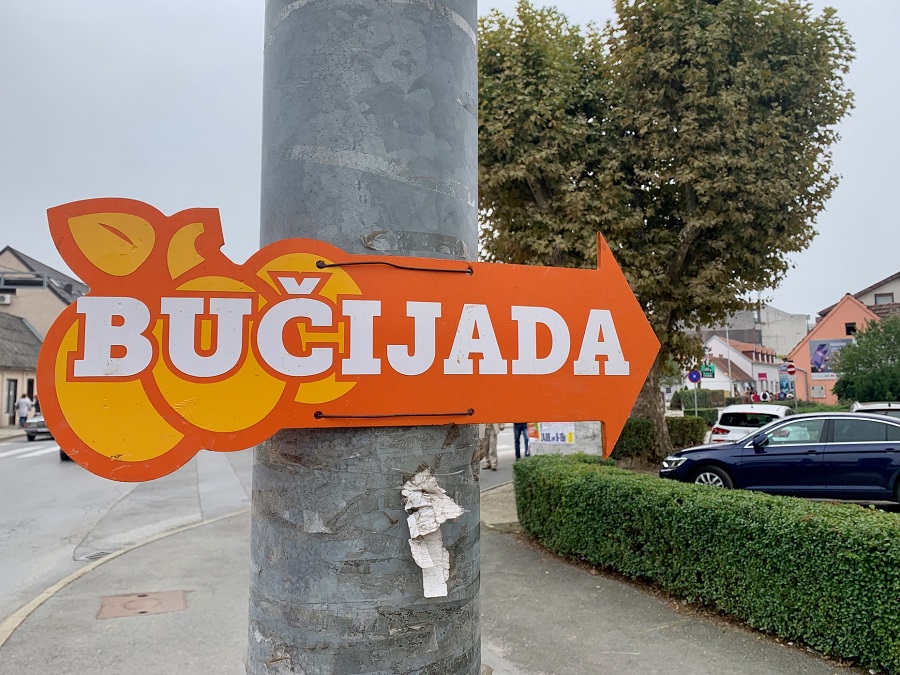
(The annual bučijada in Ivanić Grad, outside of Zagreb, is one of the town’s largest fall festivals.)
How fun would it be to sample Croatia’s versions of this fall favorite and pick up some new treats too?! What do they have here that’s different from what we have at home? As it turns out, quite a lot.
Consuming pumpkin
My stomach led as I walked off the train in Ivanić Grad the next morning. I met the wonderful Aleksandra, and asked where I could find pumpkin pie. “We don’t make that here,” she said. What about pumpkin bread, surely this bread-forward culture loads it into the bakeries? No again. Had I tasted bučnica? The savory pastry is a pumpkin strudel, popular in and around Zagreb, and made with pumpkin, fresh cheese, cream, and eggs wrapped in a thin dough. My first-ever serving there at the festival was pretty darn good.
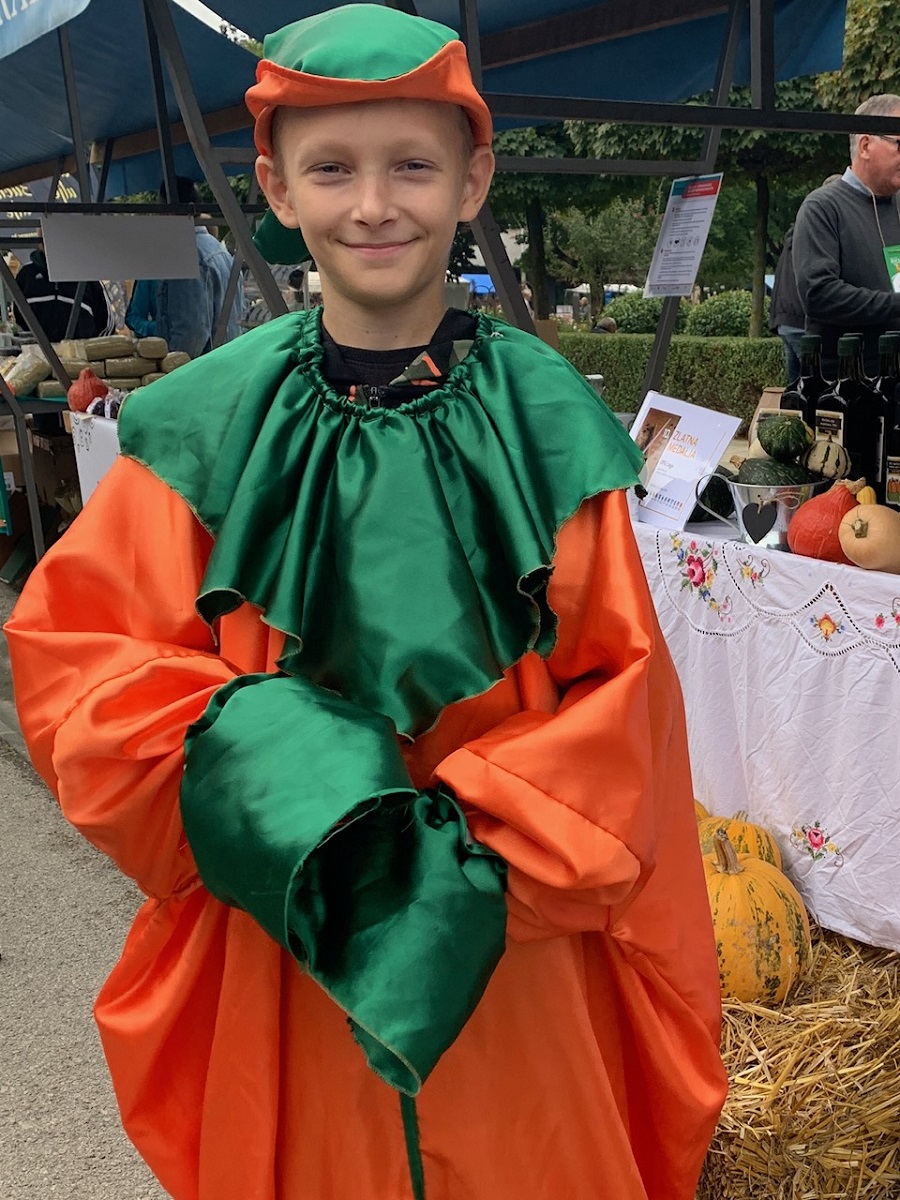
(The sweetest pumpkin at the festival was working the crowd near his family’s product table.)
Croatians love all sorts of fresh vegetables, why don’t they cook and eat more pumpkin? Because the squash is considered animal feed. So sad…
Fresh pumpkin seeds and pumpkin beer were abundant however, and pumpkin seed oil—bučino ulje—was the prize at the festival. An entire street was dedicated to OPG’s selling this nutty-tasting oil and other pumpkin products.
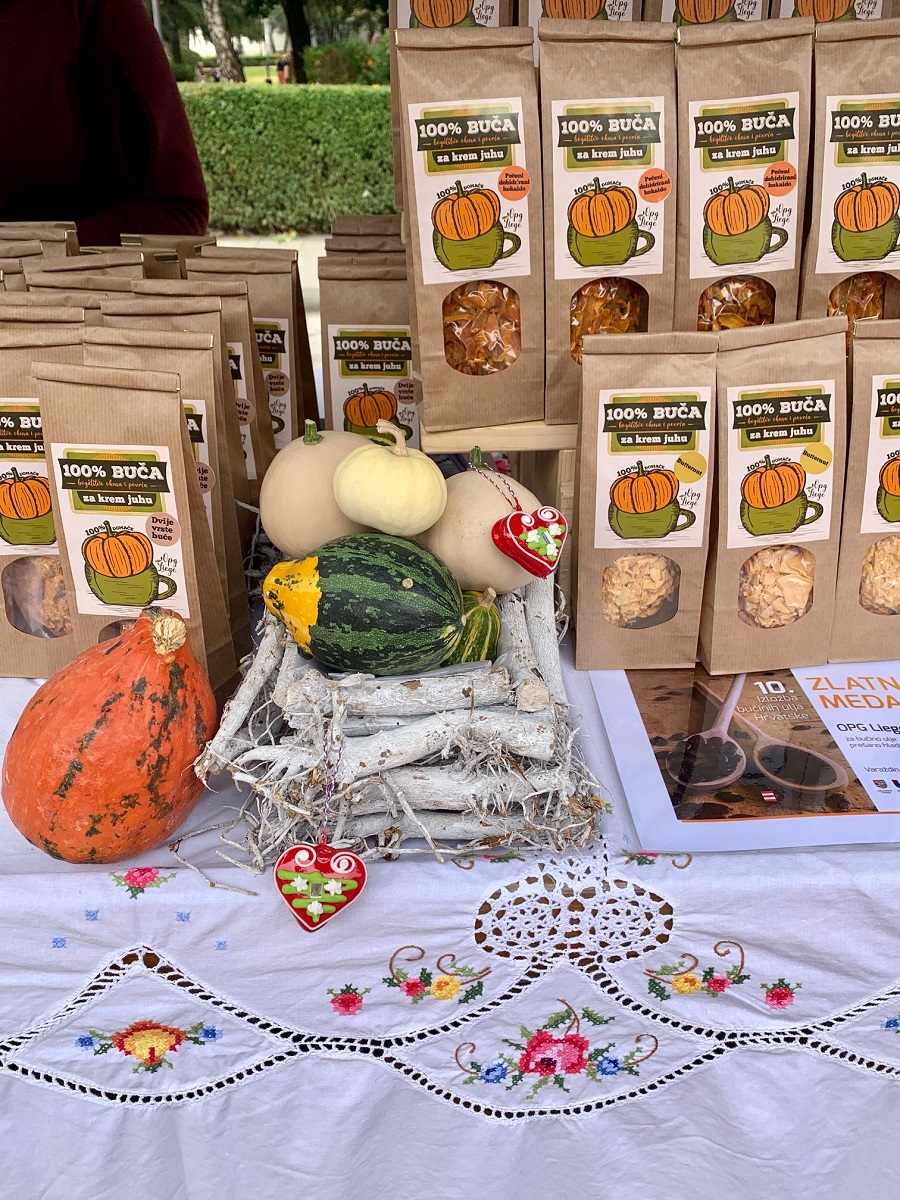
(A dried soup mix, made with 100% pumpkin, is a unique product.)
Pumpkin seed oil
Apparently, bučino ulje is a prestigious business, I noticed that several bottles displayed “winner” stickers. I knew why as soon as the oil hit my tongue—I was blown away by the flavor. I’ve had the store-bought oil and I will never do that again, there’s absolutely no comparison to Cro’s homemade product.
I was instructed on proper usage—don’t cook with the oil; only use it raw; cover food such as leafy greens and bean salad; drizzle it on strudel and vanilla ice cream; add to soups and stews for nutty sweetness. I’m pretty sure I’ll be sprinkling it on everything.
My disappointment over the pie was replaced with glee over the oil.
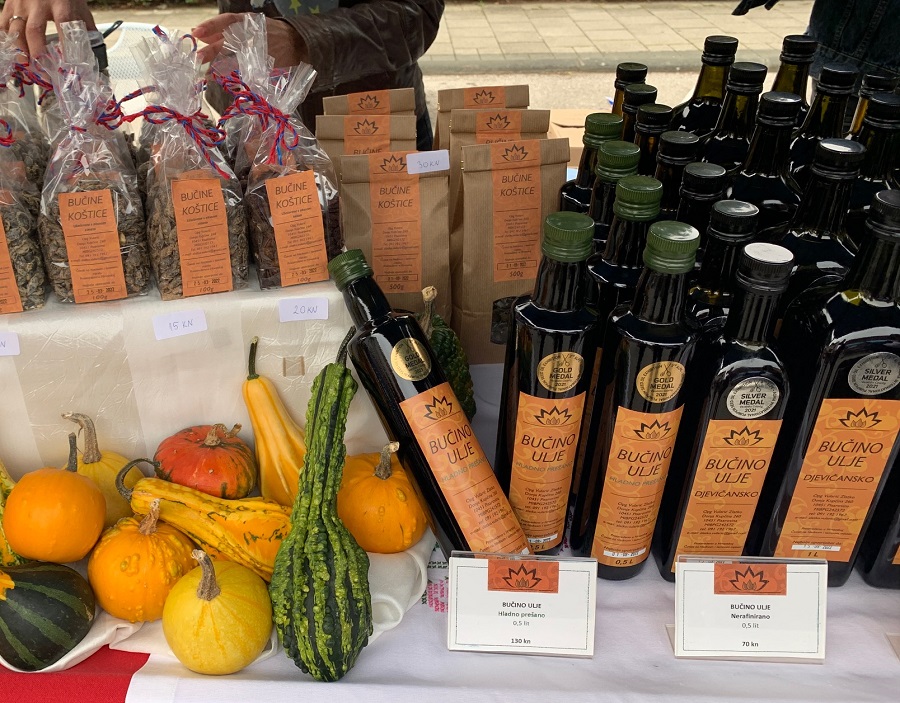
(Award-winning pumpkin oil, along with seeds coated in chocolate and other toppings, are frequently displayed on vendor tables.)
Eliminates wrinkles
Beyond trail mix and culinary applications, pumpkin seeds have serious medicinal credentials. They’re a rich source of vitamin E, zinc, omega 3- and 6- fatty acids, and antioxidants. In this regard, pumpkin seed oil is on par with Croatia’s other superfood—olive oil. It can improve heart health by lowering cholesterol and reducing high blood pressure. For us ladies, it’s an ingredient in skincare products that help hydrate the skin and eliminate the appearance of wrinkles. That right there is enough for me to gulp it.
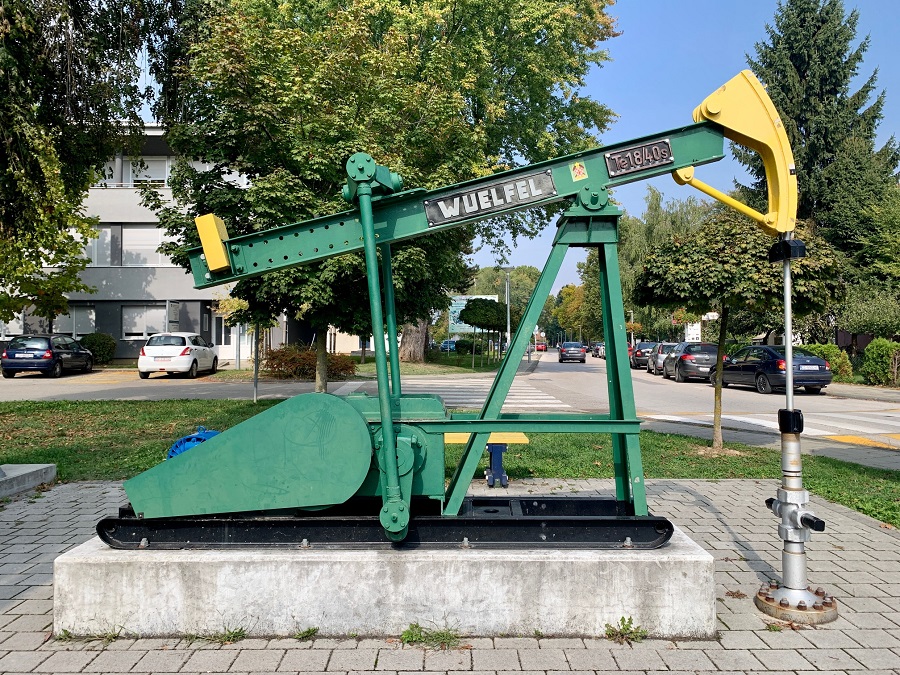
(Not far from the festival, INA’s oil drills can be seen around town.)
Black gold
I thought I’d seen what the town had to offer when things went in a different direction. Ana Gašparović, president of the Association of Heritage Friends and a local tour guide, educated me on Ivanić Grad’s “black gold.” It’s a designation given to the town’s three prominent native oils—pumpkin, petroleum, and Naftalan.
(The Naftalan Special Hospital for Medical Rehabilitation was built to treat skin disorders, specifically due to the discovery of Naftalan oil.)
Black oil began bubbling up from the ground in 1855, when it was pulled by hand. One hundred years later, after World War II, Germans led the first industrial production and oil drills can be seen around town. The headquarters of the oil and gas utility INA is located a few blocks from the festival, along with several other company buildings. Ivanić attracted the nickname “Little Kuwait” for its generous crude supply. Unfortunately, today it’s drying up and production will soon be shutting down.
Slightly further away is Naftalan Special Hospital for Medical Rehabilitation. The facility is dedicated to the treatment of inflammatory skin disorders, such as psoriasis, and features creams and bath oils made from the medical Naftalan oil. Ivanić discovered its natural resource of Naftalan in the 1980s, which is rare. Azerbaijan is the only other place on the planet where the oil is found.
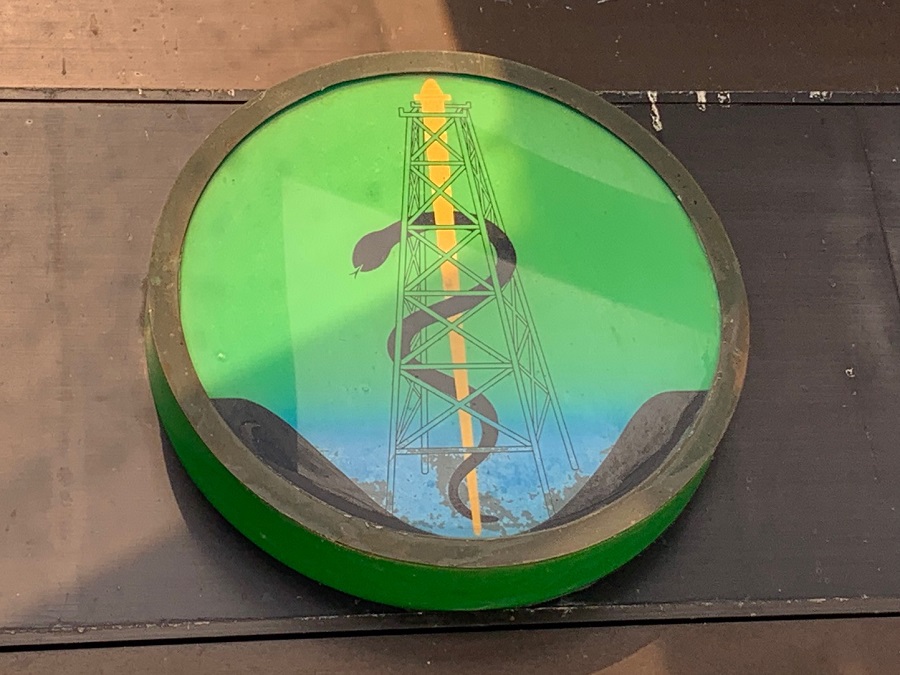
(The integration of the medical and crude industries is represented in a graphic above the entrance to the Naftalan hospital. A snake and staff, symbolizing medicine, is combined with an oil rig.)
Yellow gold
Aleksandra joked with me that Škrlet is Ivanić’s “yellow gold,” a grape varietal that’s indigenous to the Moslavina region. Eight vineyards produce wine from the slopes of the Moslavačka gora Mountain. Janko Kezele, president of Škrlet Moslavina Association and one of the eight family producers, said, “We are proud to produce the wine as we nurture our tradition and identity of our region and our homeland.” Doing my homework for this story, I found it light, fruity, and rather likeable.
(Several items made it home in the author’s backpack: two Škrlet wines (by Kezele and Mikša); 100% virgin pumpkin oil by Bachusha; dried soup mix by OPG Liege; black garlic by OPG Knežević.)
A rural festival
The festival was spread out with multiple locations of vendors, activities, displays, a music stage, and food concessions, and it was packed with visitors. Ivana Alilović, Director of the Zagreb County Tourist Board, said, “We’re happy to have 200+ rural exhibitors participate in this year’s festival, especially during these times with covid.” It’s Ivanić’s biggest pumpkin festival yet and it’s got a lot to offer.
On the train
Riding the train from Ivanić back to Zagreb, I reflected on how a pumpkin festival broadened my perspective. My American brain recalled memories of pie, warm apple cider, and picking pumpkins from a patch. My Croatian experience was a cultural enlightenment that included bučnica, bučino ulje, Škrlet, and a cool history lesson on the town’s industry, plus I met some nice local people.
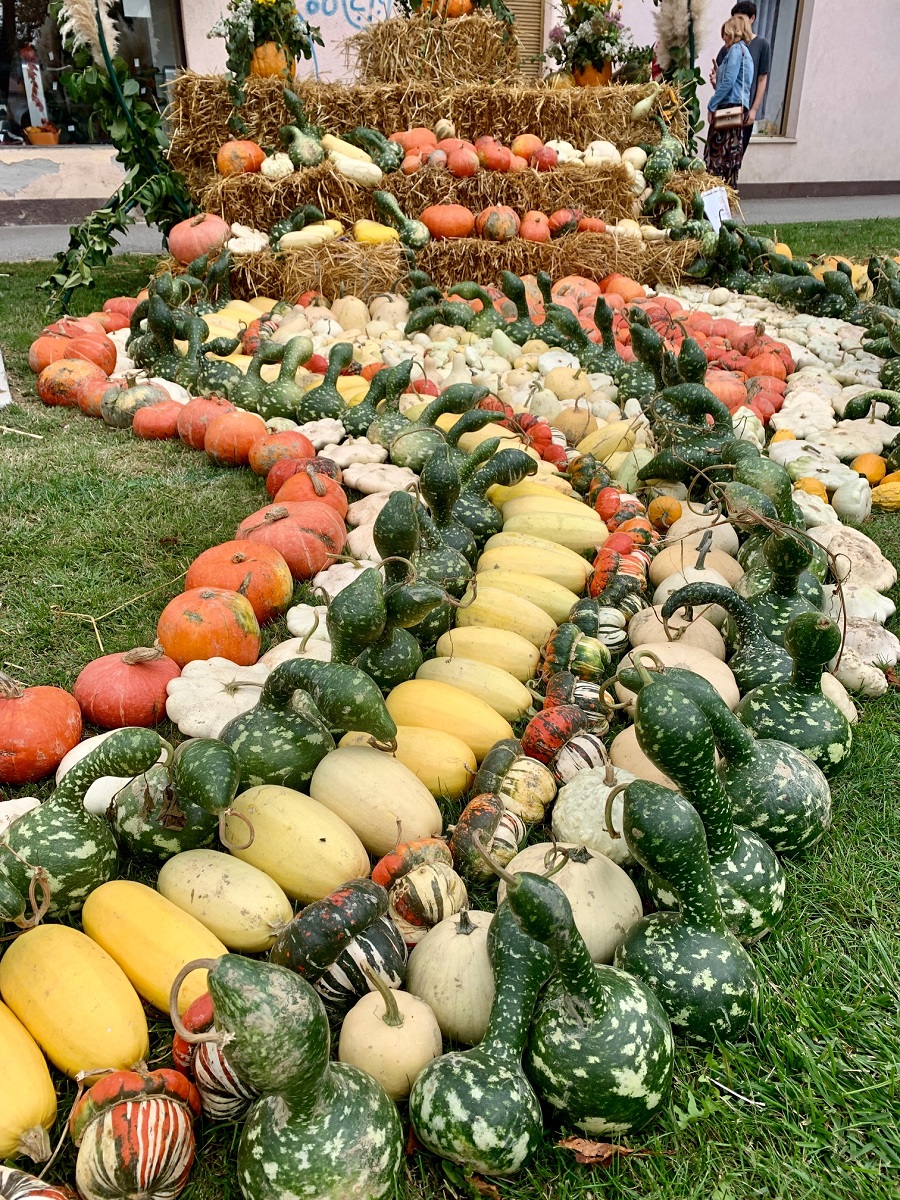
(It takes all shapes and sizes of gourds to make a colorful pumpkin patch.)
Story and photographs ©2021, Cyndie Burkhardt. https://photo-diaries.com
Learn more at TCN’s Digital Nomads channel.

